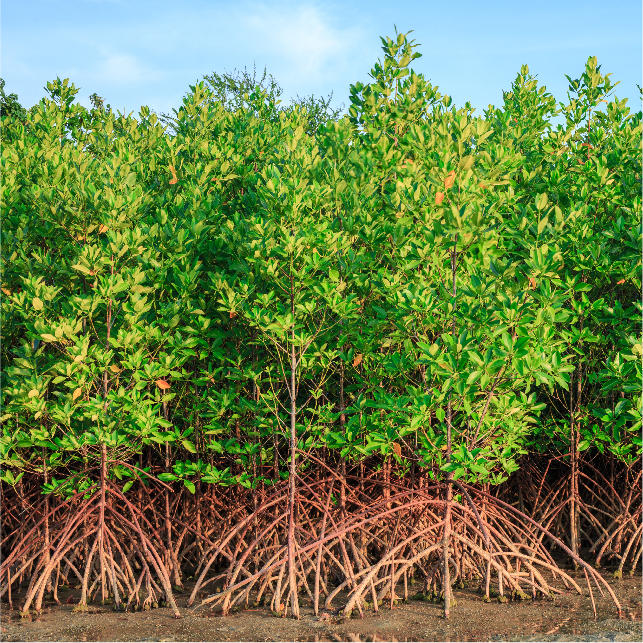Solutions
Double click here to edit new New Header component
-
Solutions
-
SOLUTIONS
Barclays Investment Bank offers advisory, finance and risk management services that connect your ideas to capital and power possibilities.
-
-
Insights
-
INSIGHTS
View thought-leading perspectives from Barclays Investment Bank’s financial experts and Research analysts.
-
-
News and Events
-
News and Events
NEWS AND EVENTS
Get the latest news about Barclays Investment Bank businesses, people and our work in the community, as well as our upcoming events and conferences.
-
- Contact Us
-
Client Login
- Barclays Live
- BARX
Client Login
Parsys 1
Double click here to edit Hero Media component
Barclays Corporate and Investment Bank clients can access the full report. Sign in
Parsys 2
Double click here to edit Go To Section component
Go to Section
Parsys 3
1. Natural forestry
As plants and trees grow, they absorb and capture CO2 from the surrounding atmosphere, storing it in their organic matter and soils. On average, our analysts think each tree could offset 100-200 kg of CO2 over its lifetime, or approximately 10kg a year over 20 years.
This is why it is vital to protect woodlands through afforestation – the process of sowing seeds in a terrain devoid of trees – or reforestation, planting native trees in forests damaged by harvesting or fires. The amount of carbon emitted every year by the EU 27 nations, for example, is equivalent to about one-seventh of the carbon stored in the region’s forests. The restoration and management of forests and the curbing of deforestation, especially in tropical and sub-tropical regions, has the greatest potential among NBS to mitigate emissions, according to the UN’s Intergovernmental Panel on Climate Change.
Technology could help increase the rate of carbon sequestration. One notable reforestation project is run in the north of Spain by two European companies. Before planting, data is compiled from satellites, UAVs, climate models, and soil samples to optimise planting designs and maximise tree survival. GPS-led automated planting systems are then used to reforest at scale.
Source: Tree Foundation, Barclays Research estimates
2. Carbon farming
Carbon is stored in soil as a component of organic matter -- plant and animal matter in various stages of decay. High-carbon soil is generally useful for agriculture, as increased carbon stocks improve water-retention capacity, nutrient availability, and soil fertility. But disturbance of such soils can release carbon stores into the atmosphere.
Carbon farming refers to processes designed to change the balance between carbon lost via soil disturbance and plant respiration, and carbon gained by leaving materials such as roots, decayed leaves, and other residues in the soil, and through the addition of manure. Through the use of such techniques, more tracts of land could become carbon “sinks,” absorbing more carbon from the atmosphere than they release.
Assessing the global capacity to sequester carbon is difficult, given the diverse nature of soils, farming practices, land use, and local climates. Estimates derived from modelling range from 1gt of CO2 per year up to 11gts. The answer is likely to be somewhere in the middle. According to estimates from the UN’s IPCC, sustainable soil management practices could sequester 15% of annual GHG emissions or about 5gt a year.
Source: Barclays Research
3. Blue carbon
Blue carbon is a relatively new concept, and methods of calculating sequestration levels are still in the early stages. The name refers to the carbon captured and stored in coastal and marine ecosystems, including seagrass meadows, salt marshes, and mangroves. Such ecosystems tend to be carbon sinks, accumulating and retaining carbon in the plants themselves, as well as the soil below. Academic literature1 suggests that the annual sequestration rate for mangroves is on average 6-8 metric tonnes of CO2 per hectare – about 2-4 times the annual rate observed in mature tropical forests.
But as with forestry, when blue carbon ecosystems are degraded or destroyed, they emit the carbon stored within them. According to data from the Blue Carbon Initiative, as much as 1bn tonnes of CO2 is being released annually from degraded coastal ecosystems.
The private sector is starting to get involved. A US-based company, for example, has joined a programme to mitigate coastal erosion in South America by building so-called Sediment Trapping Units. Such structures are permeable and promote sediment deposits, so that young mangrove trees arise naturally or, when planted, grow in newly formed mud banks.
Barclays Research analysts argue that four industries are particularly well placed to capitalise on the growth of NBS: energy, financial services, agriculture, and monitoring and verification. But many sectors could unlock opportunities in their own way. Companies investing in NBS today are likely to face lower costs for carbon emission reduction in the future.
1 Howard, J., Hoyt, S., Isensee, K., Pidgeon, E., Telszewski, M. (eds.) (2014). Coastal Blue Carbon: Methods for assessing carbon stocks and emissions factors in mangroves, tidal salt marshes, and seagrass meadows. Conservation International, Intergovernmental Oceanographic Commission of UNESCO, International Union for Conservation of Nature. Arlington, Virginia, USA.
Source: Barclays Research
Parsys 4
Parsys 5
Double click here to edit Experts Panel Card component
About the experts

Lydia Rainforth

Marie Freier

Mick Pickup

Chris Stevens
iParsys for Double Pixel component





